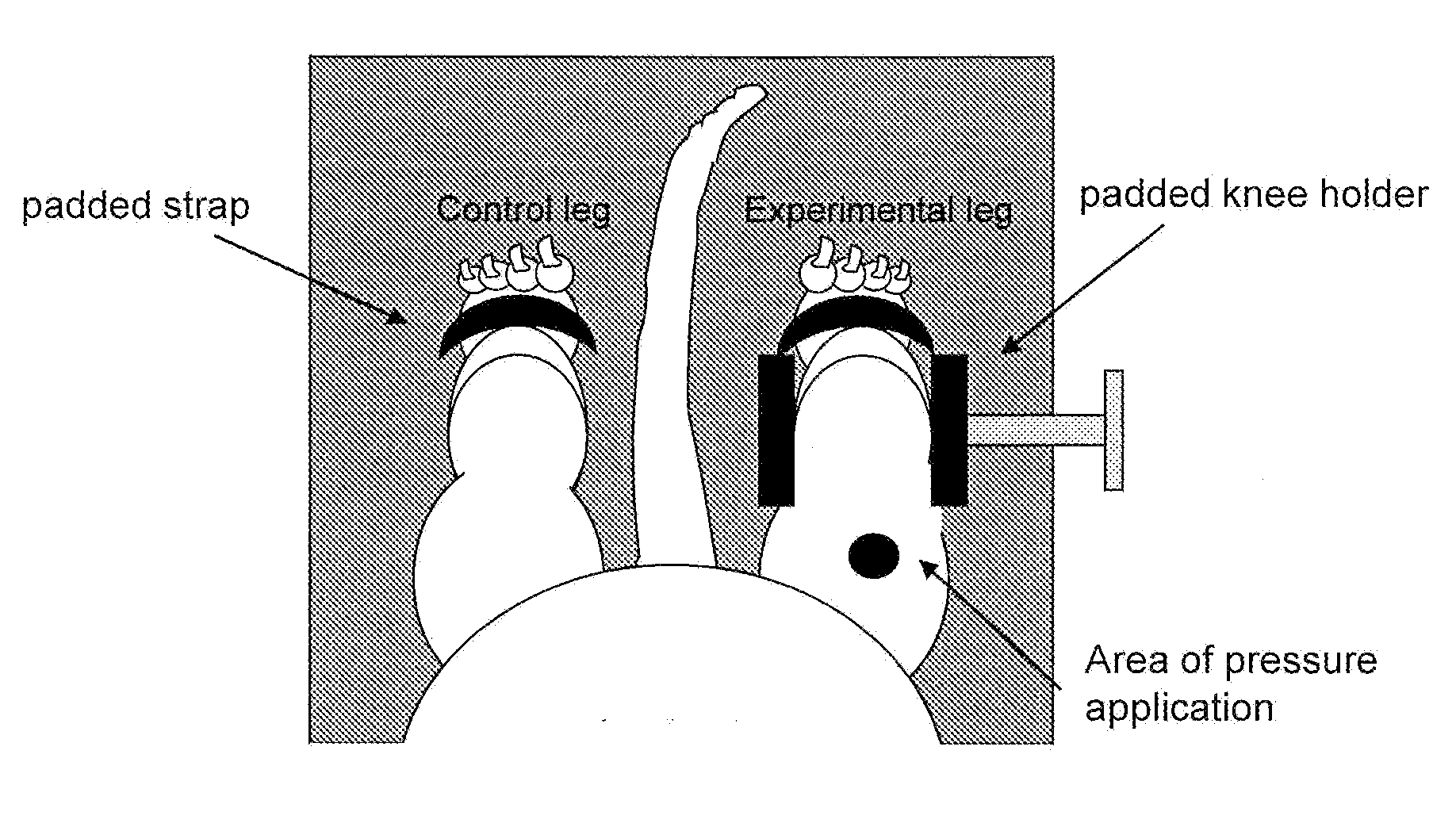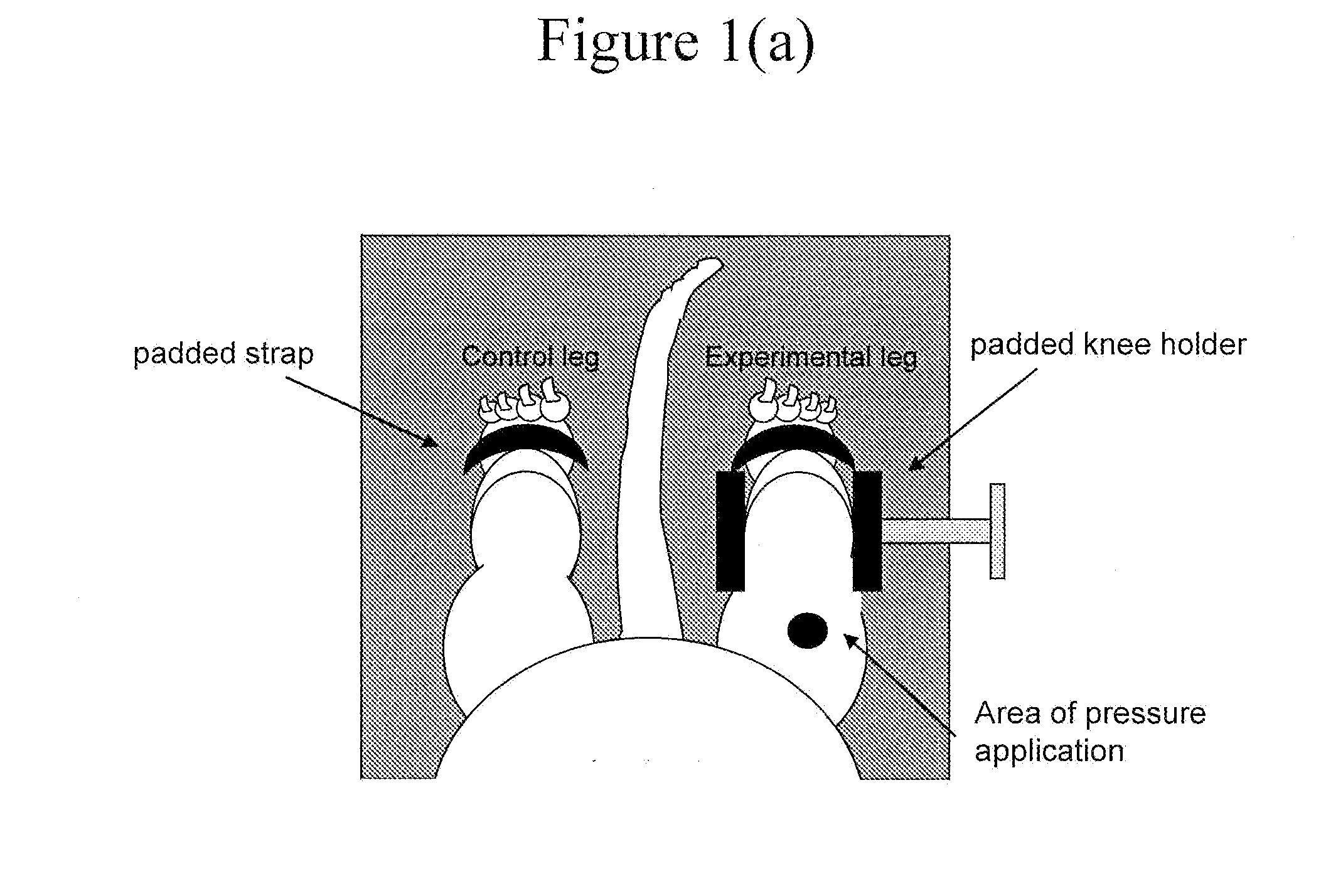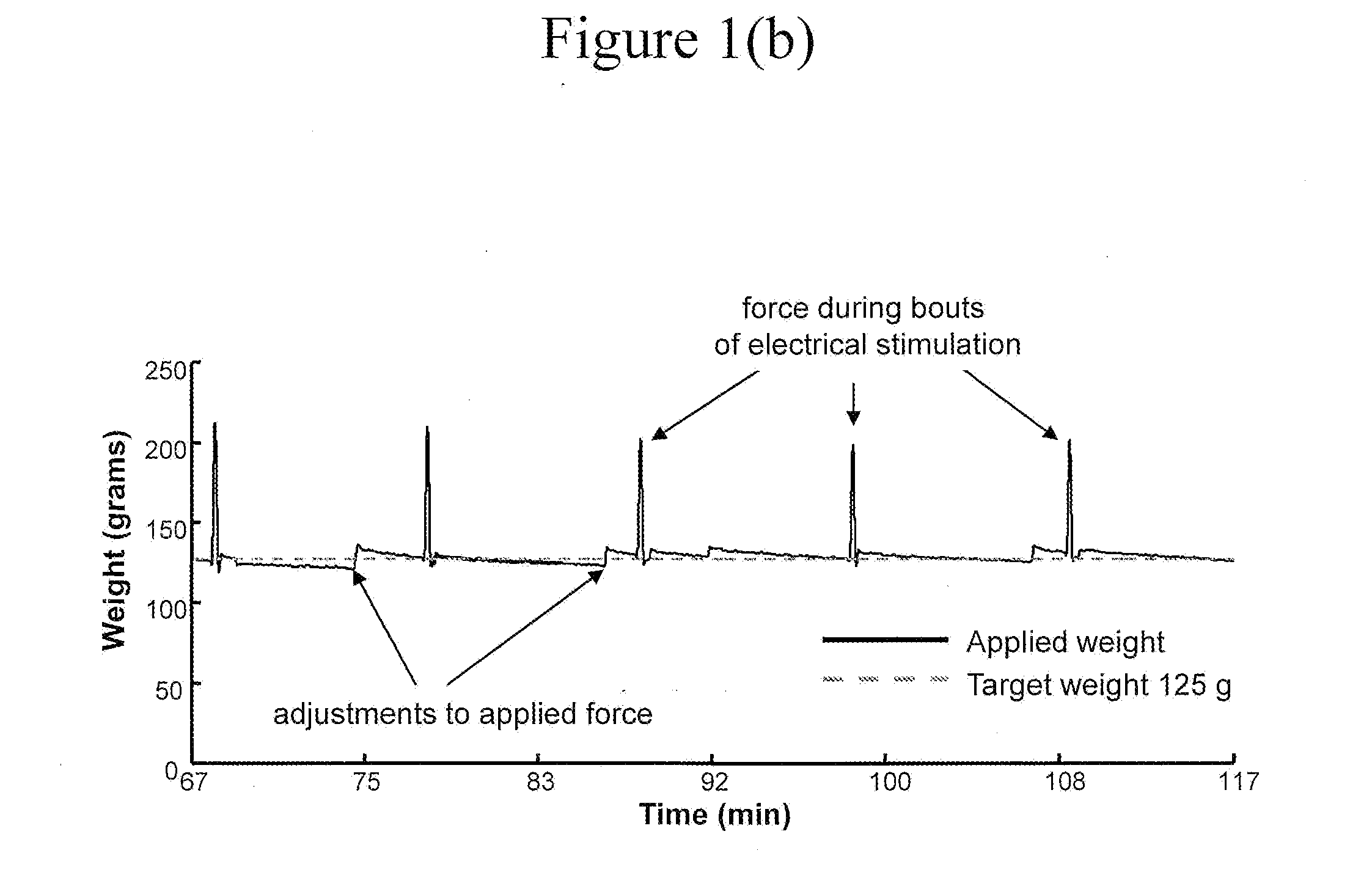Mitigation of pressure ulcers using electrical stimulation
a technology of electrical stimulation and pressure ulcers, applied in the field of treatment, can solve the problems of pressure ulcers that are not easily curable, prolong the damage of tissue, and high stress levels at the bone-muscle interface, so as to reduce damage, increase oxygenation to the loaded tissue, and restore blood flow
- Summary
- Abstract
- Description
- Claims
- Application Information
AI Technical Summary
Benefits of technology
Problems solved by technology
Method used
Image
Examples
example no.1
Example No. 1
[0074]Intermittent electrical stimulation may be a useful medical intervention that allows immobilized individuals to remain seated or supine for prolonged periods of time, reducing the frequency of assisted repositioning, and, most importantly, reducing the development of DTI. Experiments have been conducted to investigate the effectiveness of applying intermittent electrical stimulation (IES) to reduce muscle injury due to the presence of persistent external pressure.
experiment 1
s of IES in the prevention of DTI in the Rat
[0075]To investigate the effectiveness of IES in the prevention of DTI, a series of experiments were conducted in four groups of rats:[0076]A Control Group, which received 2 hours of external load applied to the quadriceps muscle of one hind limb,[0077]Experimental Group 1, which received the application of pressure and simultaneous application of a 10-s stimulus bout (biphasic, charge-balanced, constant current, 10-40 mA, 250 μs, 50 pulses / s) to the femoral nerve of the experimental leg every 10 minutes throughout the duration of pressure application (see FIG. 1c),[0078]Experimental Group 2, which received the same pressure as Group 1 and simultaneous electrical stimulation to the treated leg (10-s bouts) every 5 minutes, and[0079]Experimental Group 3, which received the application of IES at 5-minute intervals but without pressure application.
[0080]Eighteen adult female, Sprague-Dawley rats were anesthetized with isoflurane (2-3% isoflur...
experiment # 2
Experiment #2: Mechanisms of Action of IES in the Human
[0094]To obtain an insight into the mechanisms of action of IES, the effect of IES on tissue oxygenation was measured in two separate experiments with human volunteers. In the first experiment, tissue oxygenation measurements were obtained from an able-bodied volunteer by means of T2* MRI quantification in muscles in both unloaded and loaded conditions, respectively. In the second, changes in the surface (bed-buttocks interface) pressure profiles generated by the IES-elicited contractions were measured in an able-bodied volunteer.
Tissue Oxygenation in Able-Bodied Human
[0095]An initial experiment was conducted in an able-bodied volunteer (male, 22 yr) to assess changes in tissue oxygenation associated with contractions elicited by IES in an unloaded muscle. The experimental setup is illustrated in FIG. 7. Electrodes were placed on the body and electrical stimulation was delivered to induce muscle contractions. The change in the s...
PUM
 Login to View More
Login to View More Abstract
Description
Claims
Application Information
 Login to View More
Login to View More - R&D
- Intellectual Property
- Life Sciences
- Materials
- Tech Scout
- Unparalleled Data Quality
- Higher Quality Content
- 60% Fewer Hallucinations
Browse by: Latest US Patents, China's latest patents, Technical Efficacy Thesaurus, Application Domain, Technology Topic, Popular Technical Reports.
© 2025 PatSnap. All rights reserved.Legal|Privacy policy|Modern Slavery Act Transparency Statement|Sitemap|About US| Contact US: help@patsnap.com



